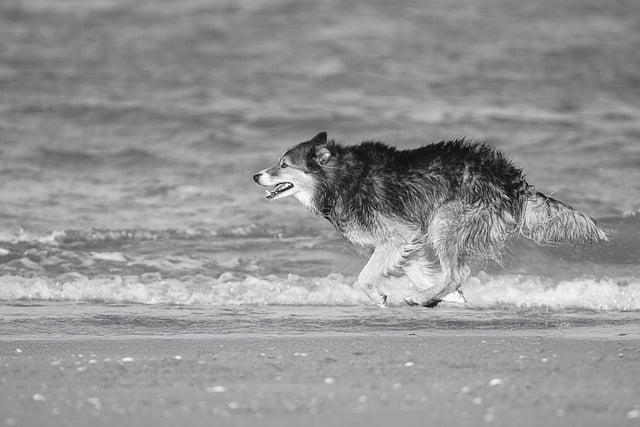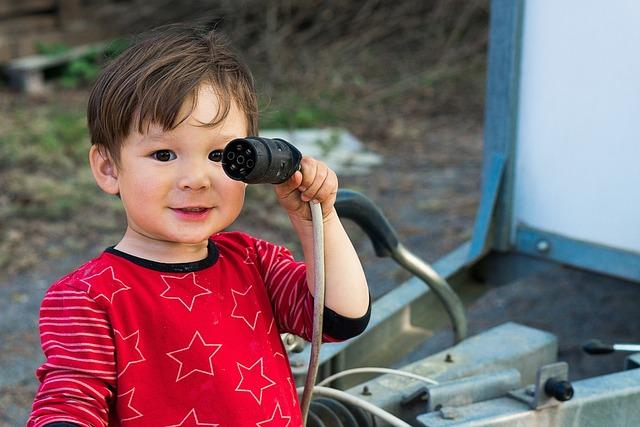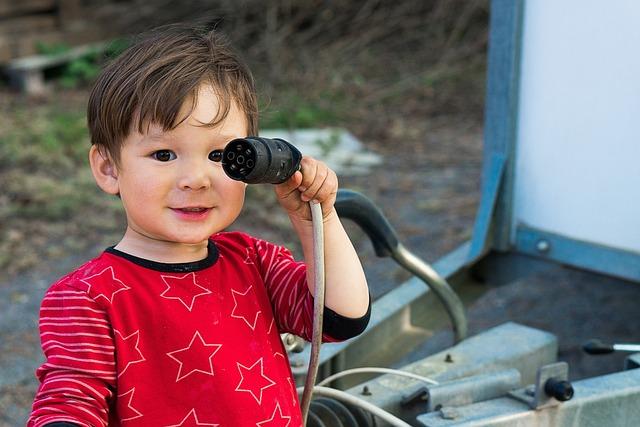Once, a frustrated dog owner named Sarah faced daily chaos. Her energetic pup, Max, chewed furniture and barked incessantly. Desperate for peace, she sought help. With consistent training, positive reinforcement, and daily exercise, Max transformed into a well-behaved companion. Sarah learned that understanding his needs was key. If you’re struggling with your dog’s misbehavior, remember: patience and the right approach can turn chaos into harmony. Invest in training today, and enjoy the bond you’ve always wanted!
Contents
- Understanding the Root Causes of Canine Misbehavior
- Effective Training Techniques to Promote Positive Behavior
- Creating a Structured Environment for Your Dog
- The Importance of Consistency and Patience in Dog Training
- Q&A
Understanding the Root Causes of Canine Misbehavior
To effectively address canine misbehavior, it is essential to delve into the underlying factors that contribute to such actions. Dogs, much like humans, are influenced by their environment, experiences, and emotional states. Understanding these root causes can empower pet owners to implement more effective training strategies and foster a harmonious relationship with their furry companions.
One significant factor is **lack of socialization**. Dogs that have not been adequately exposed to various people, animals, and environments may exhibit fear or aggression in unfamiliar situations. This can lead to behaviors such as barking, growling, or even biting. Ensuring that your dog experiences a variety of social settings during their formative months can help mitigate these issues. Consider enrolling your dog in puppy classes or arranging playdates with other well-behaved dogs to enhance their social skills.
Another critical aspect to consider is **insufficient physical and mental stimulation**. Dogs are naturally energetic and intelligent creatures that require regular exercise and mental challenges to thrive. When they do not receive enough activity, they may resort to destructive behaviors, such as chewing furniture or digging. Incorporating daily walks, interactive toys, and training sessions can significantly reduce these tendencies, allowing your dog to channel their energy positively.
Lastly, **inconsistent training and communication** can lead to confusion and frustration for both the dog and the owner. Dogs thrive on routine and clear expectations. If commands are not consistently reinforced or if different family members use varying cues, your dog may struggle to understand what is expected of them. Establishing a unified approach to training, using positive reinforcement techniques, and maintaining a consistent schedule can help your dog learn appropriate behaviors more effectively.
Effective Training Techniques to Promote Positive Behavior
Training your dog effectively requires a blend of consistency, patience, and understanding. One of the most powerful techniques is **positive reinforcement**, which involves rewarding your dog for good behavior rather than punishing them for misbehavior. This method not only encourages your dog to repeat desirable actions but also strengthens the bond between you and your pet. Use treats, praise, or playtime as rewards to motivate your dog and make training sessions enjoyable.
Another essential technique is **setting clear boundaries**. Dogs thrive on structure, so it’s crucial to establish rules that are consistently enforced. Whether it’s teaching your dog where they can and cannot go in the house or what behaviors are acceptable during walks, clarity is key. Use simple commands and hand signals to communicate these boundaries effectively. Remember, consistency is vital; everyone in your household should be on the same page to avoid confusing your dog.
Incorporating **socialization** into your training routine can also lead to positive behavior. Exposing your dog to various environments, people, and other animals helps them develop confidence and reduces anxiety. Arrange playdates with other dogs, visit dog parks, or take your dog on outings to different locations. This exposure not only helps your dog learn how to behave in different situations but also reinforces their training in a variety of contexts.
consider using **interactive training tools** to keep your dog engaged and focused. Puzzle toys, treat-dispensing balls, and training apps can provide mental stimulation while reinforcing good behavior. These tools can make training sessions more dynamic and enjoyable, ensuring that your dog remains interested and eager to learn. By incorporating these techniques into your training regimen, you’ll be well on your way to fostering a well-behaved and happy companion.
Creating a Structured Environment for Your Dog
Establishing a structured environment for your dog is essential in curbing misbehavior. Dogs thrive on routine and predictability, which helps them understand what is expected of them. Start by setting clear boundaries within your home. Designate specific areas for your dog to relax, eat, and play. This not only provides them with a sense of security but also minimizes confusion about where they are allowed to roam.
Consistency is key when it comes to training and managing your dog’s behavior. Implement a daily schedule that includes regular feeding times, walks, and play sessions. This routine will help your dog anticipate what comes next, reducing anxiety and unwanted behaviors. Additionally, ensure that all family members are on the same page regarding rules and commands. This unified approach reinforces your dog’s understanding of acceptable behavior.
Incorporating positive reinforcement into your structured environment can significantly enhance your dog’s learning experience. Reward your dog with treats, praise, or playtime when they exhibit good behavior. This not only encourages them to repeat those behaviors but also strengthens the bond between you and your pet. Remember to be patient; it may take time for your dog to adjust to the new structure.
Lastly, consider providing mental stimulation through interactive toys and training exercises. Engaging your dog’s mind can prevent boredom, which often leads to mischief. Activities such as puzzle toys, obedience training, and agility courses can keep your dog occupied and focused. By creating a structured environment that combines routine, consistency, positive reinforcement, and mental challenges, you will pave the way for a well-behaved and happy canine companion.
The Importance of Consistency and Patience in Dog Training
When it comes to training your dog, two key elements stand out: consistency and patience. These principles are not just buzzwords; they are the backbone of effective training. Dogs thrive on routine and clear expectations. By establishing a consistent set of commands and rules, you create a structured environment where your dog can learn and feel secure. This means using the same words and gestures for commands every time, ensuring that your dog understands what is expected of them.
Moreover, patience is essential in the training process. Dogs, much like humans, learn at their own pace. It’s important to recognize that misbehavior is often a result of misunderstanding rather than defiance. By remaining calm and patient, you foster a positive learning atmosphere. Instead of reacting with frustration when your dog doesn’t grasp a command immediately, take a step back and reinforce the behavior you want to see. This approach not only helps your dog learn but also strengthens the bond between you.
Incorporating positive reinforcement is another vital aspect of maintaining consistency and patience. Rewarding your dog for good behavior with treats, praise, or playtime encourages them to repeat those actions. This method is far more effective than punishment, which can lead to fear and anxiety. By consistently rewarding desired behaviors, you help your dog associate good actions with positive outcomes, making them more likely to repeat those behaviors in the future.
Lastly, remember that training is a journey, not a destination. Celebrate small victories along the way, and don’t be discouraged by setbacks. Every dog is unique, and what works for one may not work for another. By committing to a consistent training routine and exercising patience, you will not only see improvements in your dog’s behavior but also enjoy a more harmonious relationship with your furry friend. Embrace the process, and your efforts will undoubtedly pay off in the long run.
Q&A
-
What are the most common reasons for dog misbehavior?
Understanding the root causes of misbehavior is crucial. Common reasons include:
- Lack of exercise
- Insufficient training
- Separation anxiety
- Fear or stress
Identifying these triggers can help you address the behavior effectively.
-
How can I effectively train my dog?
Training is essential for good behavior. Consider these strategies:
- Use positive reinforcement techniques, such as treats and praise.
- Establish a consistent routine for commands and rewards.
- Keep training sessions short and engaging.
- Be patient and persistent; behavior change takes time.
Consistency and positivity are key to successful training.
-
What role does exercise play in preventing misbehavior?
Regular exercise is vital for your dog’s physical and mental well-being. Benefits include:
- Reducing excess energy that can lead to mischief.
- Improving overall mood and reducing anxiety.
- Enhancing focus during training sessions.
A well-exercised dog is typically a well-behaved dog.
-
When should I seek professional help for my dog’s behavior?
If your dog’s misbehavior persists despite your efforts, consider professional assistance. Signs that you should seek help include:
- Severe aggression or fearfulness
- Destructive behavior that poses safety risks
- Inability to follow basic commands
- Behavior that disrupts your daily life
Professional trainers or behaviorists can provide tailored solutions to help you and your dog.
addressing your dog’s misbehavior requires patience, consistency, and understanding. By implementing positive reinforcement techniques and establishing clear boundaries, you can foster a harmonious relationship with your furry friend. Start today for a well-behaved companion!




